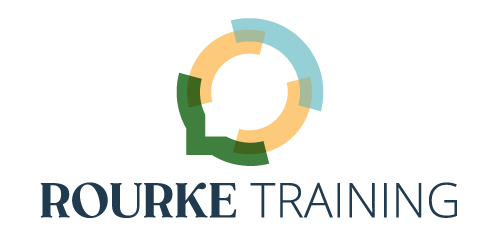Practice makes perfect. The 10,000 hour rule, as popularized by Malcolm Gladwell in his book Outliers: The Story of Success (2008). Practice what you preach. You are what you practice.
In a results-driven culture, we are surrounded by reminders that practice leads – seemingly inevitably – to excellence. There’s no shortage of assessments, rubrics, and productivity tools for quantifying our progress. Or, all too often, our failure to make sufficient progress.
While there’s no doubt that practice is an essential part of improving any skill, growth is more complicated than just putting in the time. If progress correlated directly to the number of hours invested, our effort would tidily map to a simple linear progression graph. Life’s not that simple. How you practice is as important as the activity itself.
Practice is a mental AND a physical activity
Through practice, the brain transfers a series of actions from working to procedural memory. The more often we do something, the more likely we are to be consistent; the more consistent we are in a set of actions, the faster the brain can retrieve them from procedural memory.
But didn’t Ralph Waldo Emerson say that “consistency is the hobgoblin of little minds”?
Not exactly. Although often mis-quoted, the line is, “A foolish consistency is the hobgoblin…” Emerson was warning his readers about staying open-minded, particularly in light of information that contradicts something you currently believe, endorse, or do. Long before today’s mindfulness movement, Emerson knew that openness and connectedness are essential elements of success.
OK, but what does that have to do with public speaking?
Don’t be foolish in the consistency of your practice. Instead, be open-minded and willing to examine what you’re doing instead of continuing to do what you’ve always done.
Repeatedly doing the wrong thing will make it easier to keep doing it. Whether you’re a beginner or an expert, pay attention when you practice. What is your body doing? Is your form correct? Are you holding tension in ways that hamper your goals? Answering these questions and making adjustments will help you avoid reinforcing bad habits.
Applying mindfulness to public speaking
For speakers, mindfulness during practice takes a few forms.
The most immediate level of awareness is noticing your breath, your posture, your gestures, everything your body is doing while you’re talking. Are you physically comfortable? Is your body supporting the work of speaking by having a firm diaphragm and upward-tilted chin or are you trapping your voice in your body with rounded shoulders and tense muscles? Heed these body cues and position your body for projecting your voice – knees loose, shoulders down & back, chin up – to build a strong foundation for your speaking.
In addition to awareness of your body’s internal state, notice how your physical presence corresponds to what you’re saying. Do you intentionally gesture for emphasis or do you wave your hands restlessly? Do you move deliberately through your presentation space to draw your audience’s attention to a shift in topic or do you mechanically crisscross like ducks in a carnival shooting gallery? Speaking is a performance, and like dance, needs choreography to be effective and meaningful.
Your emotions also play a role in your ability to learn and remember. Studies by Tyng, et al. (2017) and Samide, Cooper, and Ritchey (2020), for example, affirm that positively- and negatively-charged experiences affect memory more than emotionally-neutral experiences do. While scientists haven’t yet developed a single unified model to explain the role of emotions in learning and memory, it’s clear that feeling something influences your brain more deeply than striving for neutrality.
If the point of practice is to learn something and later recall it, your emotional state during practice is an important factor in whether your practice is successful over time.
Experiment to find your best results
One way to improve your public speaking technique is to think of your practice as opportunities for using the scientific method to experiment with options. Develop a solid base level of mastery of your speech or presentation to be the control. Pick one element to change, run it several times, assess your result. Incorporate or reset to your control, pick another element, and repeat. Go through the cycle as often as necessary until you find the most effective combination for your purpose.
I do this when I’m teaching multiple sections of the same class within one semester or in back to back semesters. Because I have the same set of students across 13 weeks in each section, I can fine-tune assignments that I’m developing and clarify explanations.
Very often, what happens in the first section of the day affects my plans for the second section, which in turn affects the third. Although I strive to run all three sections of a course as similarly as possible, the classroom is also a valuable laboratory for testing ideas in real time. As long as I’m clear with my students that I’m trying out something new, they’re game to try it and they love turning the tables and giving feedback to their professor!
Create opportunities to practice and to receive feedback
If you’re not an educator in a classroom or a corporate trainer, how can you find an audience so you can practice on a routine basis?
If you have a professional development budget, you might hire a public speaking coach for a series of sessions or a quick tune-up, check out programs like Toastmasters, or take a public speaking course at a local college. Seek opportunities to present at your office: lead a regularly-scheduled meeting, make a video summarizing an important client meeting or product pitch to distribution to folks who weren’t there. Attend networking events and have specific goals in mind to work on.
As often as you can, practice in front of other people and/or record yourself. Ask your audience ahead of time to take note of one or two specific things that you want feedback on. This gives them a focus for their comments so they don’t fall back to, “It was great! Don’t change a thing!” That’s nice to hear, but not helpful for actually improving your skills.
When you’ve finished, give your audience a few moments to pull their thoughts together and then – and here’s the hard part – listen to what they say. If you keep hearing the same comments from different audiences, pay attention, regardless of whether that piece of feedback is positive or negative. Numerous audiences are unlikely to be wrong about the same thing, over and over.
How about you?
How do you work on specific areas of public speaking that you want to strengthen? Do you have a practice tip that always works for you? Or a mindfulness activity that centers you?
Tell us about it in the comments.
Check Out Our YouTube Channel
The Rourke Training – Ongoing Mastery YouTube channel has a bit of something for everyone. Go there to get Kirsten’s take on examples of public speaking, as well as reflections on her entrepreneurial journey. The channel is also the home of the podcast Kirsten and Kellie produced for 5 years, Ongoing Mastery: Presenting & Speaking, which covers everything connected to continually improving your craft of being a public speaker, from interviews and mini-coaching sessions with guests to conversations between Kirsten and Kellie.
Come join us. Cheers, Kellie


